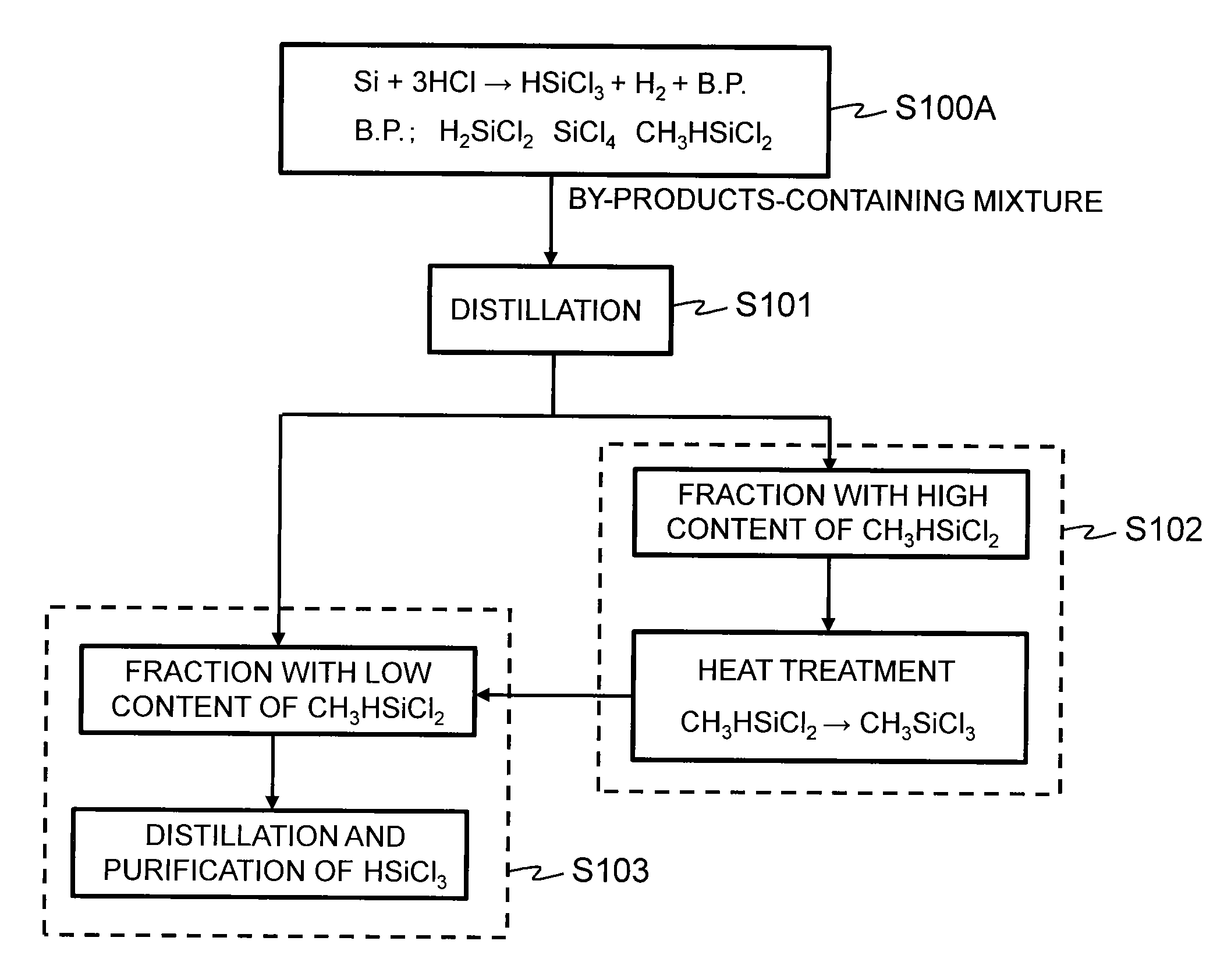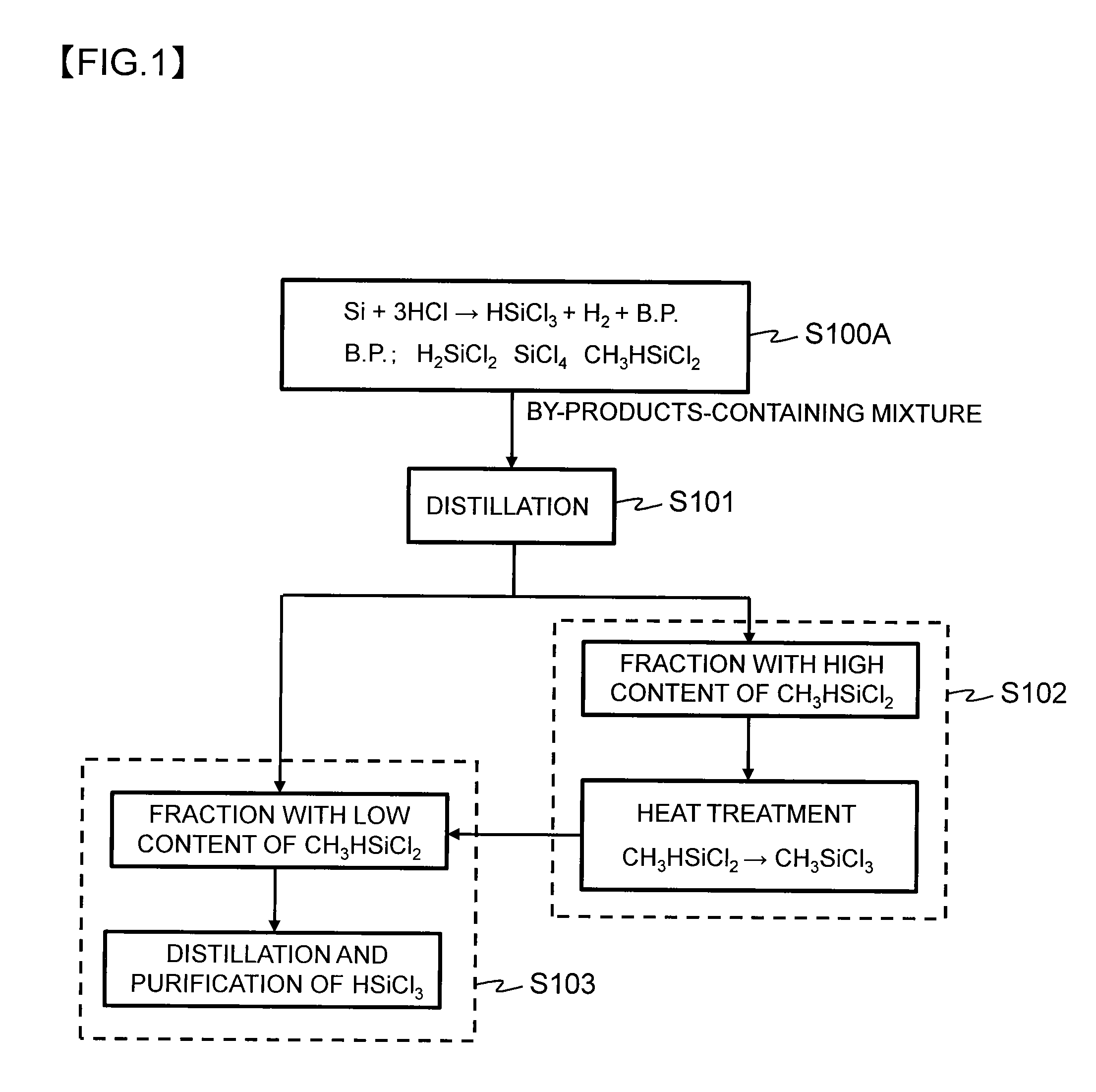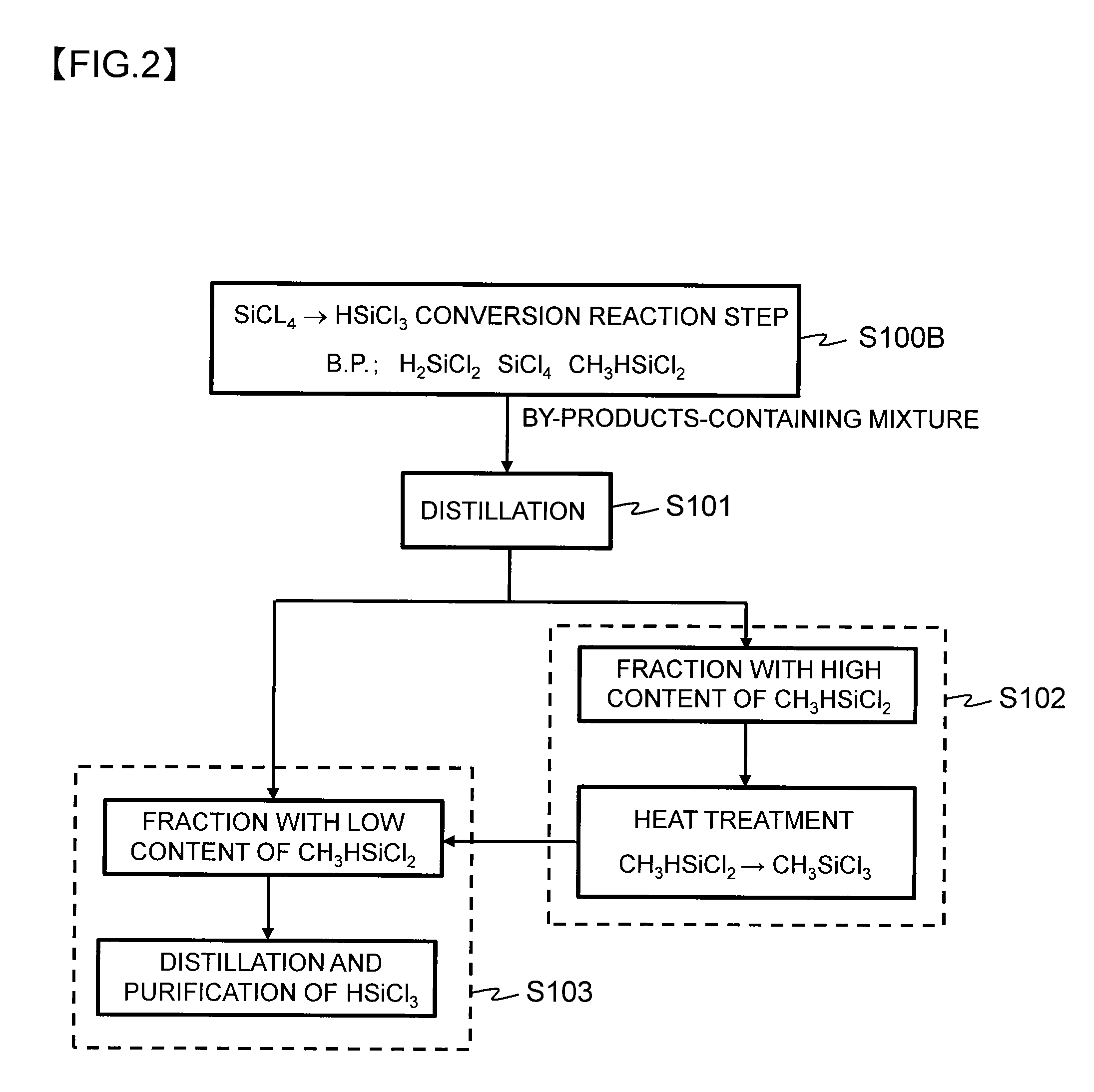Method for producing trichlorosilane
a technology of trichlorosilane and trichlorosilane, which is applied in the direction of inorganic chemistry, separation processes,fractional distillation, etc., can solve the problems of difficult to remove methyldichlorosilane, difficult to produce trichlorosilane, and high carbon impurity content, so as to reduce the overload of high-purity trichlorosilane purification
- Summary
- Abstract
- Description
- Claims
- Application Information
AI Technical Summary
Benefits of technology
Problems solved by technology
Method used
Image
Examples
example 1
Chlorine Disproportionation Effect
[0047]Using an empty tube reactor (reactor A) and a reactor with a fluidized bed of metallurgical grade metal silicon (reactor B), the disproportionation effect of methylchlorosilanes in a mixture of chlorosilanes was studied. As a reactor, a stainless steel tube with a diameter of 40 cm and a length of 100 cm was used.
[0048]Into the reactors, silicon tetrachloride containing 180 ppm wt methyldichlorosilane diluted with twice the molar amount of hydrogen was introduced in the gaseous state. The reactor was heated to 500° C. and the gas to be evaluated was supplied into the reactor at a superficial linear velocity of 1.0 cm / sec. Residence time in the constant temperature zone was set at about 50 seconds. The pressure in the reactor was kept at 2.0 MPa.
[0049]Methylsilanes in the product mixture supplementarily obtained from the reactors were analyzed by gas chromatography using a flame ionization detector (FID), and the amounts of methyldichlorosilane...
example 2
Effect when Copper Chloride (CuCl) was Used as a Catalyst
[0051]Metallurgical grade metal silicon was charged with 4 wt % copper chloride (CuCl) as a catalyst and a stainless steel tube reactor (4 cm in diameter and 100 cm in length) was filled with the metallurgical grade metal silicon up to a height of 50 cm. To this reactor, silicon tetrachloride containing 180 ppm wt methyldichlorosilane was supplied with twice the molar amount of hydrogen. The conditions of chlorine disproportionation reaction were as follows: pressure, 2.0 MPa, temperature, 500° C., and retention time, 100 seconds. The ratio of trichlorosilane (TCS) to tetrachlorosilane (STC), (TCS / STC), in the final chlorosilane mixture product was roughly 3 / 7, and methyldichlorosilane was reduced to 7.9 ppm wt, while methyltrichlorosilane was produced in an amount of 150 ppm wt.
PUM
 Login to View More
Login to View More Abstract
Description
Claims
Application Information
 Login to View More
Login to View More - R&D
- Intellectual Property
- Life Sciences
- Materials
- Tech Scout
- Unparalleled Data Quality
- Higher Quality Content
- 60% Fewer Hallucinations
Browse by: Latest US Patents, China's latest patents, Technical Efficacy Thesaurus, Application Domain, Technology Topic, Popular Technical Reports.
© 2025 PatSnap. All rights reserved.Legal|Privacy policy|Modern Slavery Act Transparency Statement|Sitemap|About US| Contact US: help@patsnap.com



